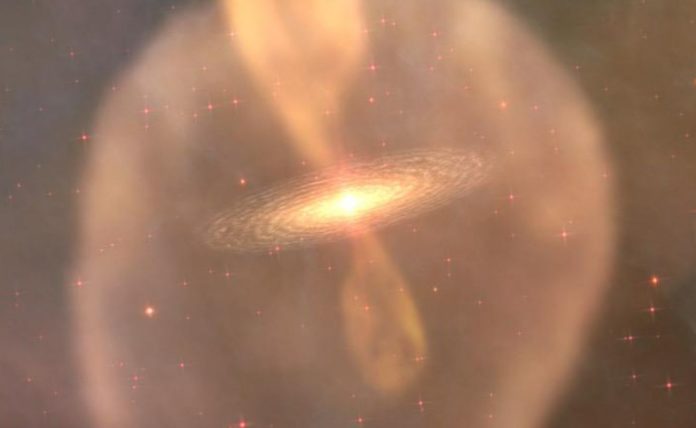Scientists from the Instituto de Astrofsica de Canarias (IAC) led an international study that found solid sulphur compounds in HH514, a jet of gas coming from the center of the Orion Nebula.
There is a possibility that the production of exoplanets is connected to the amount of concentration of this chemical element.
Astronomers have gathered data from three of the most prominent optical telescopes on Earth: VLT, Grantecan, and the Hubble Space Telescope (HST).
The findings were published in the Royal Astronomical Society’s scientific journal Monthly Notices.
There are many protostars and protoplanetary discs in the Orion Nebula. They are surrounded by a strong field of ultraviolet light from the stars in the Trapezium of Orion. This light ionizes the gas and can photo-evaporate and break apart these structures.
As a result, planet formation in this harsh environment is thought to be improbable. But the chemical makeup of the many gas jets that come from the protoplanetary discs and shoot out into their surroundings can give us clues about what’s going on.
These jets can destroy solid dust particles, releasing their atoms into the gaseous phase, and increasing the concentration of these atoms. As recent theoretical studies have demonstrated, the accretion of material in a protoplanetary disc is not uniform, and huge grains of dust, mainly sulphides, can be trapped and grow.
Researchers led by the IAC have discovered a sulfur concentration twice as high as the solar value in a jet of gas located at HH514, right in the heart of the Orion Nebula.
This could be explained by the destruction of dust grain reservoirs rich in sulphides. The high quantity of these substances appears to indicate that planet formation has occurred or is occurring, in the protoplanetary disc from which the jet originates.
“Sulphur is an important element for protein synthesis in living beings,” says José Eduardo Méndez Delgado, the paper’s first author. “In the nebulae where stars form sulphur is mainly found in the gas phase, but on Earth we find it in rocks containing sulphides.”
He says that we don’t know much about the processes that cause sulphur to change from a gas to dust or the other way around in the Universe as a whole.
Despite different theories, “we still lack the evidence to know just what is happening in the Orion Nebula. Our work on HH514 will give us a better understanding of this phenomenon, and will attract other researchers to analyze this subject .”
The observations from three of the most prominent optical telescopes, the VLT, the HST, and the GTC, which are located in the Roque de los Muchachos Observatory (Garafa, La Palma), were used in this research.
“Interpreting the results we obtained has been challenging. We have rejected many of the options which could explain the strange over-abundance of sulphur in HH514, although it is possible that there are still some details we are missing,” adds César Esteban, co-author of the paper.
“It’s clear that the Orion Nebula still has many secrets to interpret. The connection between the jets of gas and possible planet formation in the Orion Nebula shows the interconnection between different fields of knowledge, and that only by collaborating will we gain improved understanding of the problema,” says Jorge Garca Rojas, co-author of the paper.
Image Credit: Gabriel Pérez Díaz (IAC)
You were reading: New Exoplanet Forming In A Hostile Environment Stunned Scientists
